Abstract
A high rate of turnover of professional personnel in a clinic is disruptive to patient care and organizational stability as well as to the individual clinician. The turnover rate for clinicians (physicians, nurse practitioners, and physician assistants) working in neighborhood health centers (NHCs) is considerably higher than that for clinicians in other forms of practices. All 10 of the neighborhood health centers in HEW (Department of Health, Education, and Welfare--now the Department of Health and Human Services) Region X (Alaska, Idaho, Washington, and Oregon) that offered a full range of medical services provided information about the clinicians that they had employed since their inception. One hundred and one clinicians were surveyed about their work experience. The vast majority of those clinicians who had left a neighborhood health center remained in the community; they cited organizational issues as being at the heart of their dissatisfaction with the centers. Clinicians who began work during the initiation of a clinic remained significantly longer. The results suggest the immediate need for a strategy directed at the smooth organizational evolution of each NHC right from its inception.
Full text
PDF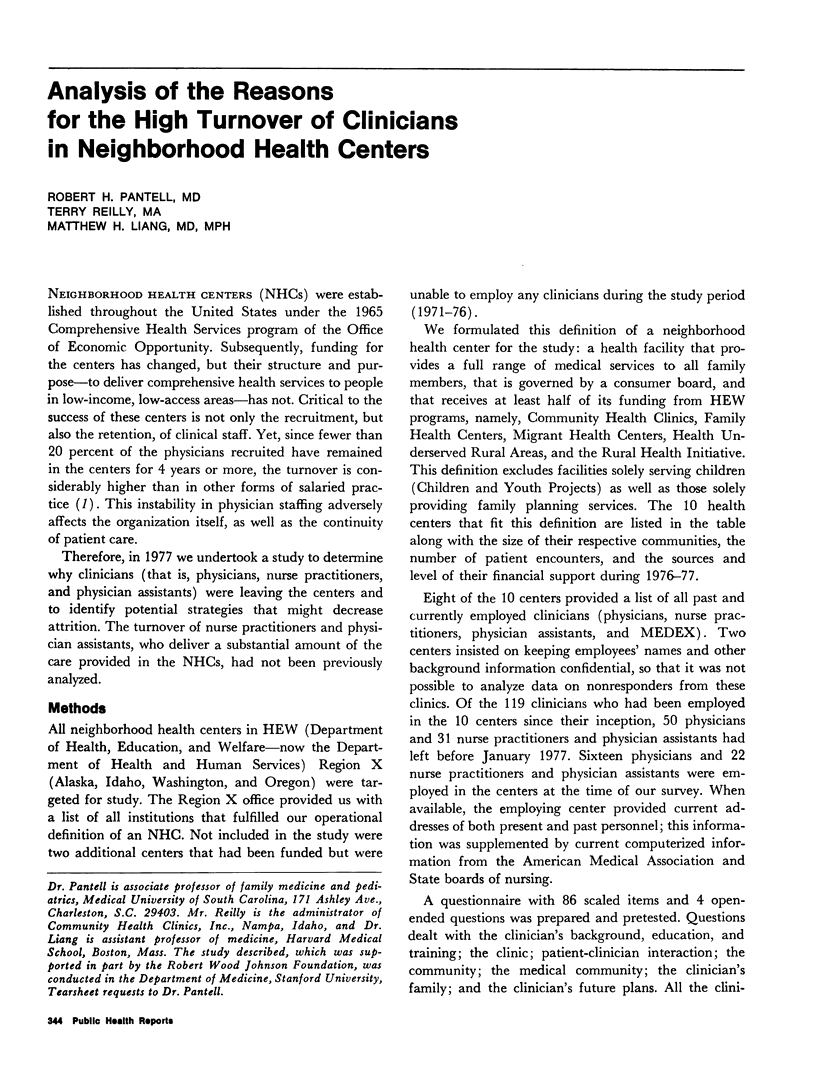
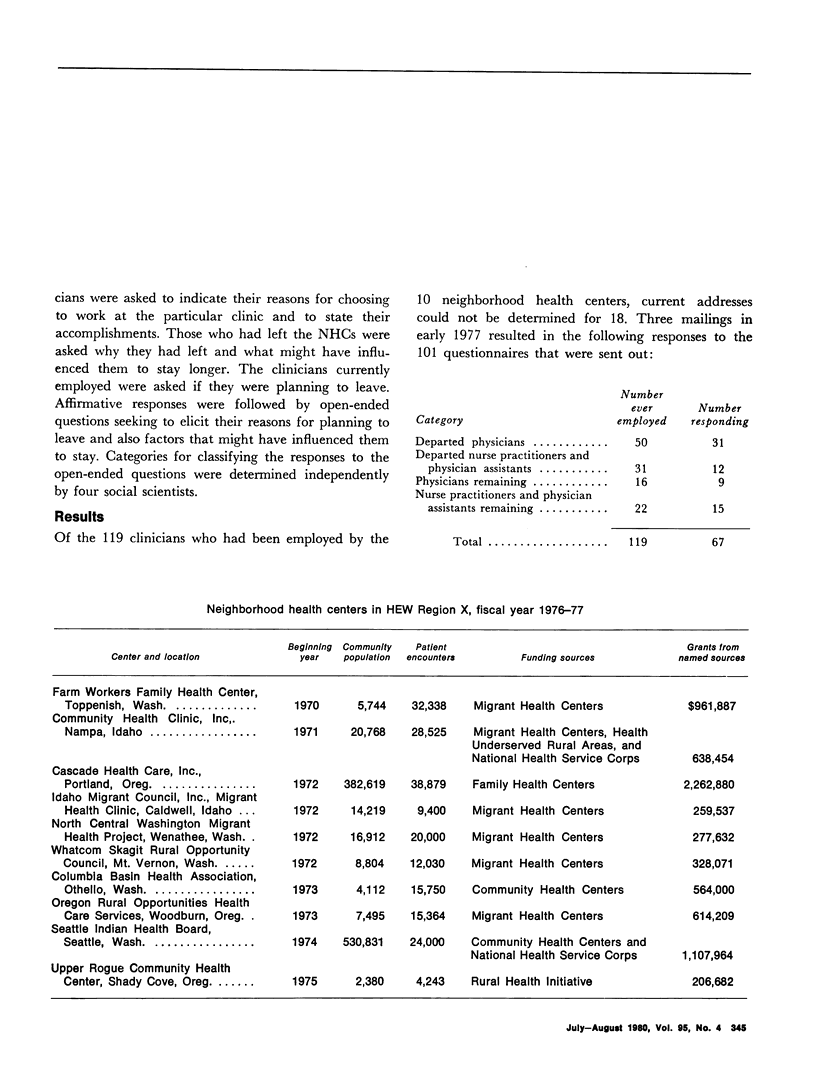
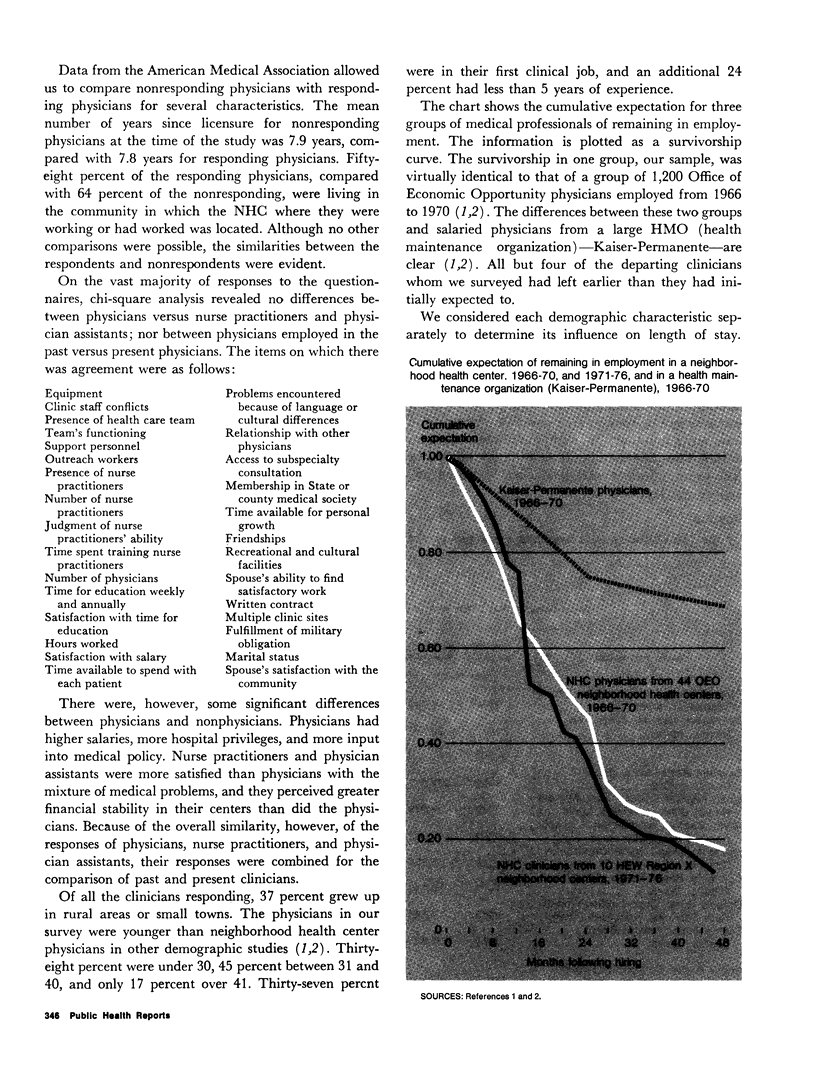

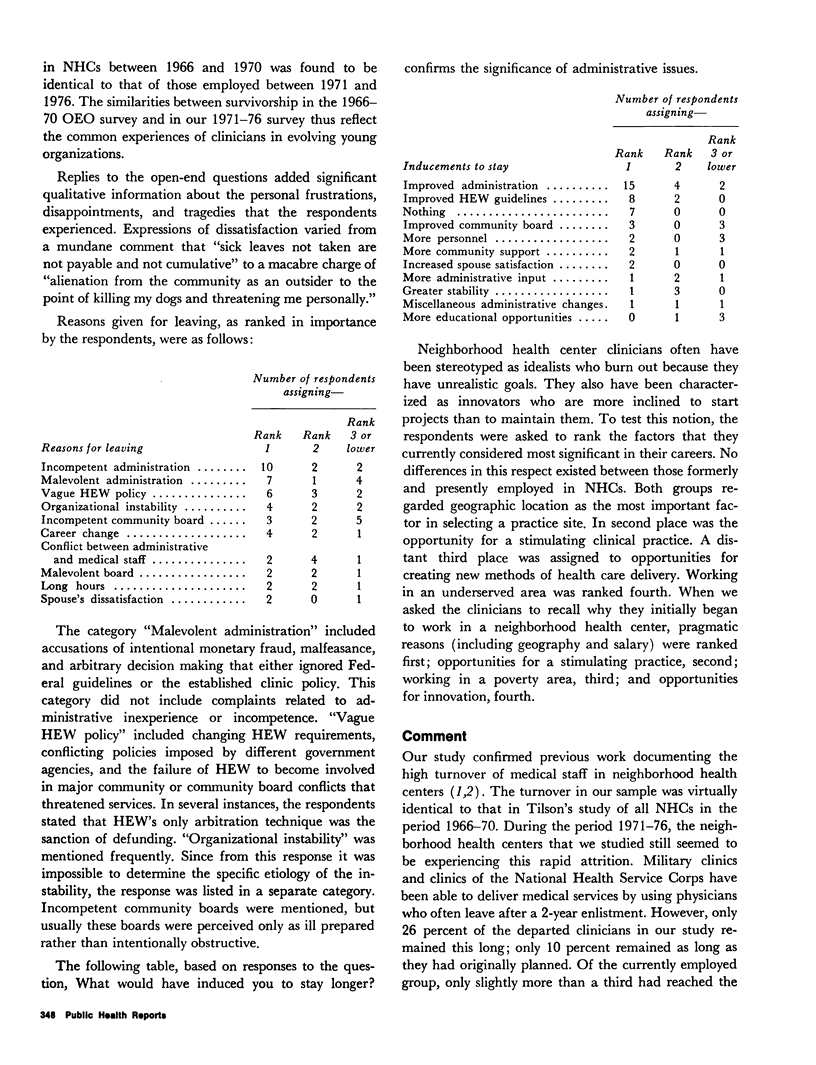
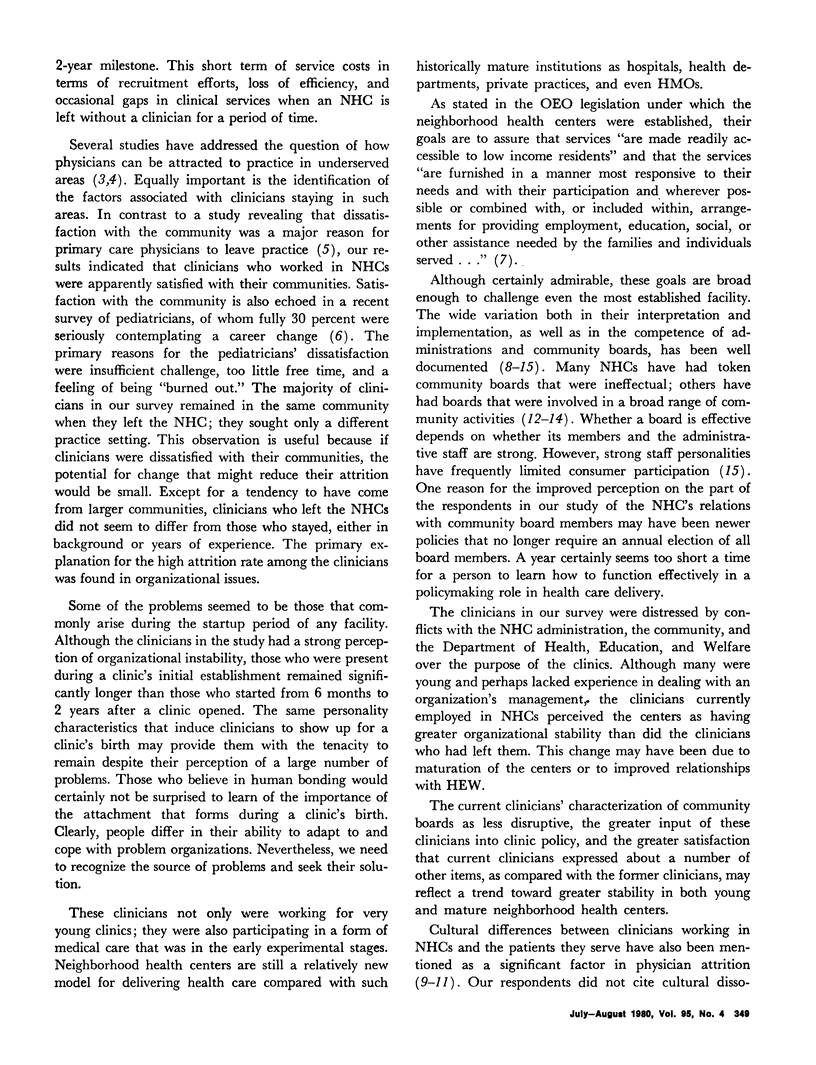
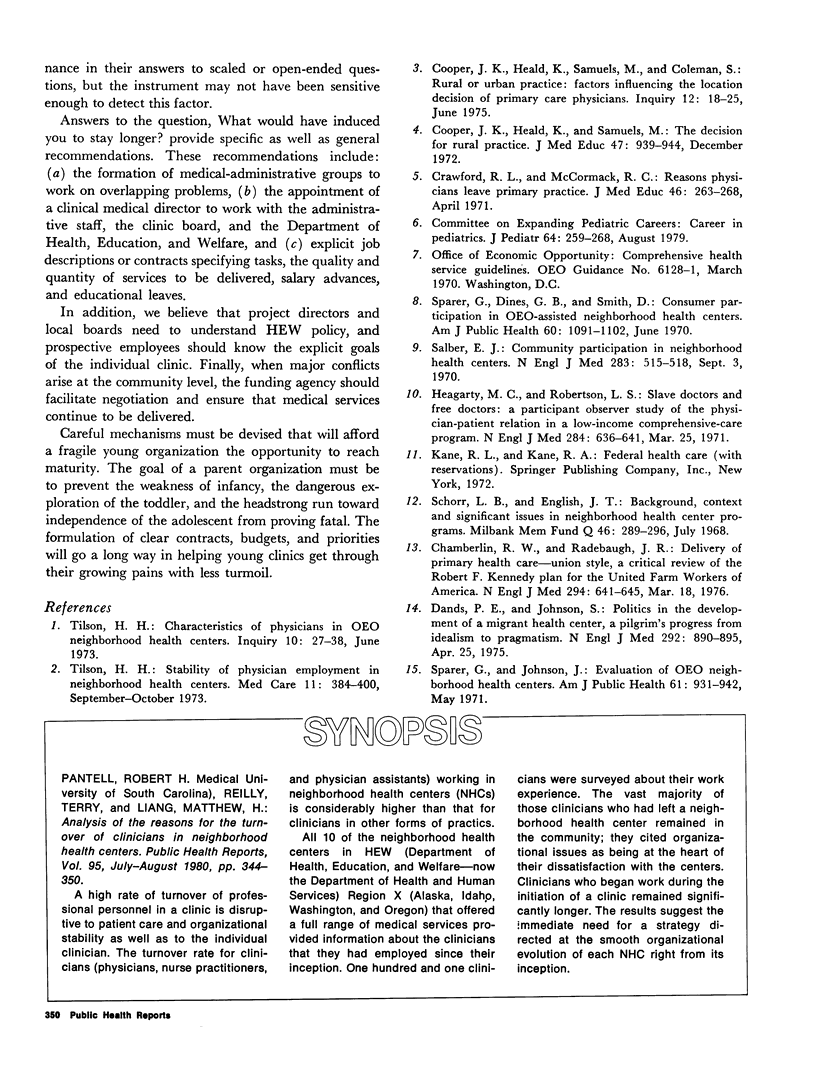
Selected References
These references are in PubMed. This may not be the complete list of references from this article.
- Chamberlin R. W., Radebaugh J. F. Delivery of primary health care--union style. A critical review of the Robert F. Kennedy plan for the United Farm Workers of America. N Engl J Med. 1976 Mar 18;294(12):641–645. doi: 10.1056/NEJM197603182941205. [DOI] [PubMed] [Google Scholar]
- Cooper J. K., Heald K., Samuels M., Coleman S. Rural or urban practice: factors influencing the location decision of primary care physicians. Inquiry. 1975 Mar;12(1):18–25. [PubMed] [Google Scholar]
- Cooper J. K., Heald K., Samuels M. The decision for rural practice. J Med Educ. 1972 Dec;47(12):939–944. doi: 10.1097/00001888-197212000-00003. [DOI] [PubMed] [Google Scholar]
- Crawford R. L., McCormack R. C. Reasons physicians leave primary practice. J Med Educ. 1971 Apr;46(4):263–268. doi: 10.1097/00001888-197104000-00001. [DOI] [PubMed] [Google Scholar]
- Dans P. E., Johnson S. Politics in the development of a migrant health center. A pilgrim's progress from idealism to pragmatism. N Engl J Med. 1975 Apr 24;292(17):890–895. doi: 10.1056/NEJM197504242921705. [DOI] [PubMed] [Google Scholar]
- Heagarty M. C., Robertson L. S. Slave doctors and free doctors--a participant observer study of the physician-patient relation in a low-income comprehensive-care program. N Engl J Med. 1971 Mar 25;284(12):636–641. doi: 10.1056/NEJM197103252841204. [DOI] [PubMed] [Google Scholar]
- Salber E. J. Community participation in neighborhood health centers. N Engl J Med. 1970 Sep 3;283(10):515–518. doi: 10.1056/NEJM197009032831005. [DOI] [PubMed] [Google Scholar]
- Schorr L. B., English J. T. Background, context and significant issues in neighborhood health center programs. Milbank Mem Fund Q. 1968 Jul;46(3):289–296. [PubMed] [Google Scholar]
- Sparer G., Johnson J. Evaluation of OEO neighborhood health centers. Am J Public Health. 1971 May;61(5):931–942. doi: 10.2105/ajph.61.5.931. [DOI] [PMC free article] [PubMed] [Google Scholar]
- Tilson H. H. Characteristics of physicians in OEO neighborhood health centers. Inquiry. 1973 Jun;10(2):27–38. [PubMed] [Google Scholar]
- Tilson H. H. Stability of physician employment in neighborhood health centers. Med Care. 1973 Sep-Oct;11(5):384–400. doi: 10.1097/00005650-197309000-00003. [DOI] [PubMed] [Google Scholar]


